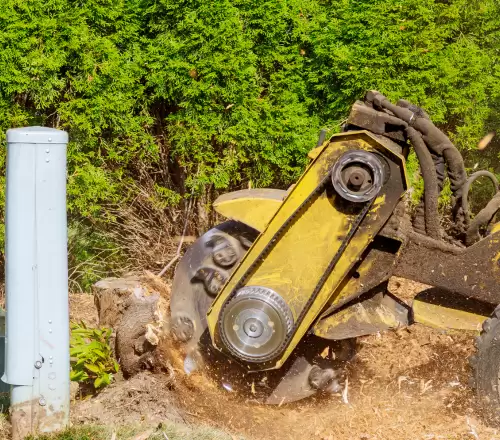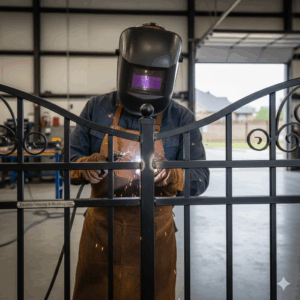Trees are not just a beautiful part of our natural landscape; they are vital to the health of our environment, providing oxygen, improving air quality, and offering shade and shelter. However, maintaining the health and beauty of trees requires more than just occasional watering or admiration from afar. This is where professional arbor care tree service come into play. With expertise in pruning, trimming, and a host of other tree care practices, these professionals ensure that your trees remain healthy, safe, and aesthetically pleasing.
The Importance of Professional Arbor Care
Trees, like any other living organism, require care and attention to thrive. While it might be tempting to handle tree maintenance on your own, the reality is that tree care is a complex and often dangerous task that requires specialized knowledge and equipment. Professional arborists are trained to understand the biology of trees, the best practices for their care, and the potential risks involved in working with them.
One of the primary reasons to hire a professional arbor care service is to ensure the safety of both the tree and the surrounding property. Improper pruning or trimming can lead to weakened tree structures, disease, or even the death of the tree. Additionally, working with trees often involves dealing with heavy branches, sharp tools, and sometimes even power lines, which can pose significant risks to untrained individuals.
Pruning: More Than Just Cutting Branches
Pruning is one of the most essential services offered by professional arborists. It involves the selective removal of certain parts of a tree, such as branches, buds, or roots. While it might seem like a simple task, pruning requires a deep understanding of tree biology and growth patterns.
Why Prune?
Pruning serves several important purposes:
- Health: Removing dead, diseased, or damaged branches helps prevent the spread of disease and pests. It also allows the tree to allocate more resources to healthy growth.
- Safety: Overgrown or weak branches can pose a hazard, especially during storms or high winds. Pruning helps eliminate these risks by removing branches that could potentially fall and cause injury or property damage.
- Aesthetics: Pruning can enhance the natural shape and beauty of a tree, making it a more attractive feature in your landscape.
- Growth Control: Proper pruning can direct the growth of a tree, ensuring that it grows in a way that is beneficial for its health and the surrounding environment.
Types of Pruning
There are several types of pruning, each serving a different purpose:
- Crown Thinning: This involves selectively removing branches to increase light penetration and air movement through the crown of the tree. It reduces the weight on heavy limbs and helps retain the tree’s natural shape.
- Crown Raising: This type of pruning removes the lower branches of a tree to provide clearance for buildings, vehicles, pedestrians, or views.
- Crown Reduction: This is used to reduce the size of a tree, often for utility line clearance. Unlike topping, which is harmful to trees, crown reduction maintains the tree’s structural integrity and health.
- Deadwooding: This involves the removal of dead, dying, or diseased branches to improve the tree’s health and appearance.
Trimming: Shaping Your Landscape
While pruning focuses on the health and safety of the tree, trimming is more about maintaining the tree’s appearance and ensuring it fits well within its environment. Trimming is often done for aesthetic reasons, but it also has practical benefits.
Why Trim?
- Aesthetic Appeal: Regular trimming keeps trees looking neat and well-maintained, enhancing the overall appearance of your property.
- Encouraging Growth: Trimming can stimulate new growth, leading to a fuller, more vibrant tree.
- Preventing Obstructions: Overgrown branches can interfere with power lines, buildings, or other structures. Trimming helps keep trees from becoming a nuisance or a hazard.
- Improving Sunlight and Airflow: Just like pruning, trimming can improve the amount of sunlight and airflow that reaches the tree and the surrounding plants, promoting a healthier landscape.
Types of Trimming
- Fine Pruning: This is a detailed form of trimming that focuses on shaping the tree and removing small, unwanted branches.
- Hedge Trimming: This involves shaping hedges and shrubs to maintain a clean, uniform appearance.
- Crown Cleaning: This is similar to deadwooding but focuses on removing smaller, unnecessary branches to improve the tree’s appearance.
Beyond Pruning and Trimming: Comprehensive Tree Care
While pruning and trimming are critical components of tree care, professional arbor care services offer a wide range of additional services to ensure the health and longevity of your trees.
Tree Removal
Sometimes, a tree becomes a hazard or is no longer viable due to disease, storm damage, or other factors. In such cases, professional tree removal is necessary. Arborists have the equipment and expertise to safely remove trees, even in tight or difficult spaces, without causing damage to the surrounding property.
Stump Grinding and Removal
After a tree is removed, the stump is often left behind. Stumps can be unsightly and can even pose a tripping hazard. Professional arborists can grind down or completely remove stumps, leaving your landscape clean and ready for new plantings.
Tree Planting and Transplanting
Choosing the right tree for your landscape and planting it correctly is crucial for its long-term health. Arborists can help you select the right species for your soil type, climate, and space constraints. They can also assist with transplanting trees, ensuring that they are moved with minimal stress and damage.
Disease and Pest Management
Trees are susceptible to a variety of diseases and pests that can compromise their health. Professional arborists can diagnose and treat these issues, often before they become severe. They can also provide preventative care to protect your trees from future infestations or infections.
Cabling and Bracing
For trees with weak or split branches, cabling and bracing can provide additional support. This technique involves installing cables or braces to stabilize the tree, reducing the risk of branch failure and prolonging the tree’s life.
Soil Care and Fertilization
Healthy soil is the foundation of a healthy tree. Arborists can assess your soil’s condition and recommend treatments such as fertilization, aeration, or mulching to improve its quality and support tree growth.
Choosing the Right Arbor Care Service
When selecting a professional arbor care service, it’s important to choose a company with certified arborists who have the knowledge and experience to care for your trees properly. Look for services that offer a comprehensive range of tree care options, from pruning and trimming to disease management and tree removal.
Additionally, ensure that the company is fully insured and follows industry safety standards. Tree care can be dangerous work, and you want to be confident that the professionals you hire are taking all necessary precautions to protect themselves, your property, and your trees.
Conclusion
Trees are a valuable asset to any property, providing beauty, shade, and environmental benefits. However, maintaining their health and appearance requires more than just occasional attention. Professional arbor care services, with their expertise in pruning, trimming, and a host of other tree care practices, are essential for ensuring that your trees remain healthy, safe, and beautiful for years to come.
Whether you need routine maintenance, emergency tree removal, or specialized care, investing in professional arbor care is an investment in the long-term health and beauty of your landscape. So, the next time you look out at your trees, consider the benefits of professional care and take the first step toward preserving the natural beauty of your property.









